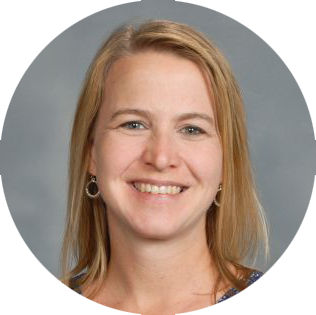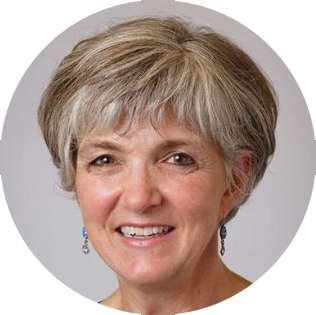Illustration Credit: Aleksandra Matafonova/iStock
Teaching in the time of coronavirus
As engineers, we are trained to embrace challenges and find satisfaction in solving problems. Over the past year, educators across the Rossin College have applied the same mindset to keep students engaged in the remote classroom, whether they were “Zooming in” from South Bethlehem apartments or watching recorded lectures from childhood bedrooms across the world.
When the pandemic hit, faculty members got camera-ready in a hurry, familiarizing themselves with video equipment and virtual backgrounds. There were new methods of collaboration to try (like Slack and Jamboard) and hands-on lab projects to adapt for at-home DIY. Some professors went back to basics, using what they had on hand (think: costumes and props from the kids’ dress-up bin); others extended a virtual hand, offering students oft-needed personal support and empathy. As the months went on, we espoused flexibility, managing online, hybrid, and in-person models of instruction as the spread of the virus dictated.
In short, Rossin College faculty members ensured that remote teaching was truly remote learning—and, in the process, learned lessons about educational delivery and pedagogy that may shape the Lehigh experience well beyond the pandemic.
As we close out another unusual but successful semester—and train our focus on returning to a more typical campus environment in the fall—we reflect on teaching in the time of coronavirus.
 Lori Herz, Professor of Practice, Bioengineering
Lori Herz, Professor of Practice, Bioengineering
Making the rapid transition to online instruction in March 2020 was challenging for all of us. However, we had the advantage of already knowing our students, and this established rapport made the changeover a bit easier. In August, we didn’t have that benefit. My Fall semester classes were considerably larger and, therefore, it was important to establish and maintain a connection with my students in the Land of Zoom. My strategy was simple: I always greeted the students by name at the start of class. This basic act is a no-brainer, but it does facilitate a connection. Some students who arrived early liked to have a conversation, even at 9 am. I also asked the students to turn on their camera and microphone at the beginning and end of class to wave hello and good-bye. These small steps are my way of telling the students that they’re seen and heard.”
 Edmund Webb III, Associate Professor, Mechanical Engineering and Mechanics
Edmund Webb III, Associate Professor, Mechanical Engineering and Mechanics
Before the pandemic, I regularly found myself asking, ‘How do we make lectures optimally beneficial to the education of the students?’ Teaching live lectures over Zoom was, of course, a shift in reality. Nonetheless, despite the little black rectangles, despite staring into a tiny camera, I was amazed by how much things were the same: Make the class active and collaborative, and students will enthusiastically follow. Breakout rooms for small-group problem-solving were the most dynamic moments in the class. My TA joined me for those classes so we could both jump between rooms and answer student questions. It was intensive, and those sessions often went beyond the typical 50-minute lecture time and into the additionally scheduled 25 minutes. But I received zero complaints and a lot of encouragement to do those more often. I also went a bit whimsical with the final course project and had students design and perform stress analysis on a swing set. Lehigh students consistently impress me when I give such assignments and this term was certainly no exception.”
 Angela Brown, Associate Professor, Chemical and Biomolecular Engineering
Angela Brown, Associate Professor, Chemical and Biomolecular Engineering
“There’s the argument that if you record the lectures, no one will to go to your class. And that’s how I might have seen it earlier in my career. But in my recent experience during the pandemic, and in the graduate distance classes I’ve taught at Lehigh, the students are paying attention on Zoom. They can focus on absorbing and processing information during the lecture, rather than frantically scribbling down notes, because they know they can always go back to a recording if they miss something. I haven’t seen any decreased engagement in my classes. It may not be possible to do this in a typical classroom setting, but it was one bright spot of teaching ‘during covid.’ I’d like to provide students that opportunity to review material on their own time and see it a second or third time going forward.”
 Susan Perry, Assistant Dean for Academic Affairs / Professor of Practice, Bioengineering
Susan Perry, Assistant Dean for Academic Affairs / Professor of Practice, Bioengineering
"What has been my role as a capstone team advisor during a pandemic? To empathize, to guide, to remind teams that even big challenges don’t diminish need—and that ‘online’ can mean ‘new opportunities.’ For example, Team ENABLE has been working (since February 2020) to design two unique sets of prosthetic fingers for a member of the local community who suffered digit amputations on both hands. From day one, the team was inspired by their client’s resilience and can-do attitude. They were eager to put their engineering skills to use to provide an affordable solution that would enable their client to accomplish everyday tasks. Then came COVID-19 and the switch to online learning—and suddenly a ‘sure bet’ no longer felt the same. I assured them that progress comes in packages of all sizes, that resources are all around if you are open to seeing them, that innovation comes from pushing boundaries—including self-imposed ones. The students have taught me that despite adversity, when opportunity and resources (even unexpected ones) are combined with students having the will to succeed and the passion to make a difference, the possibilities are boundless."
 James Gilchrist, Professor, Chemical and Biomolecular Engineering
James Gilchrist, Professor, Chemical and Biomolecular Engineering
"We’ve done a lot of ‘flipping the classroom,’ meaning lectures are recorded and class time is spent working through problems, but I’ve also found value in flipping the advising model. When the pandemic took away summer internships, I saw the opportunity to engage undergraduates in an effort to enhance the chemical and biomolecular engineering department. Ten students signed up for this one-credit summer outreach project, which included designing a new, introductory-level chemical engineering course that’s open to all majors. Right now, I’m teaching Coffee and Cosmetics: Engineering of Consumer Products, which looks at principles of scale-up, mass balances, transport, and process design using two familiar product categories. The student input really created the activation energy to make this happen, and now we are brainstorming larger goals to develop a lab facility around this class."
